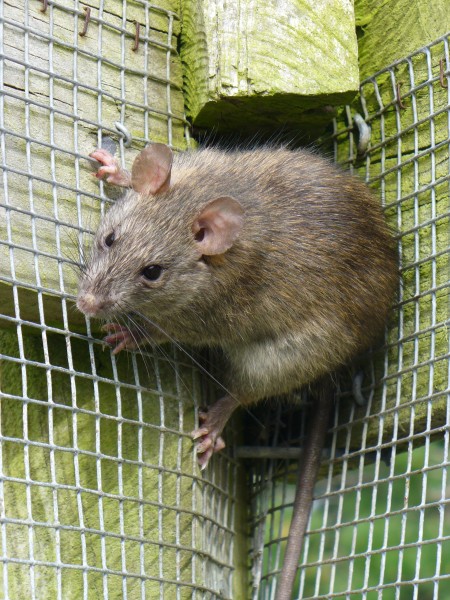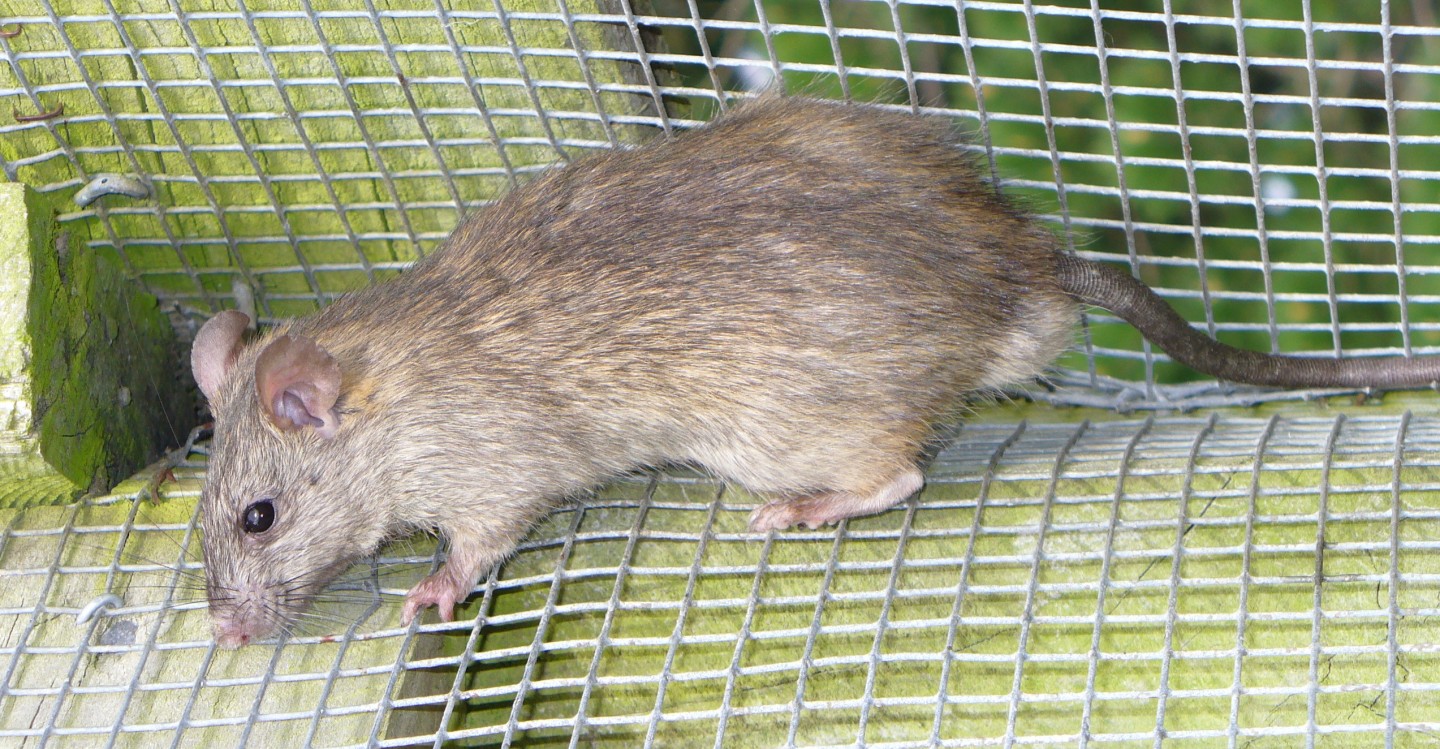References
- The Spinoff. Rat tracker: An interactive map of supermarket rodent sightings in NZ. The Spinoff 2024;(15 February). Available from: https://thespinoff.co.nz/kai/15-02-2024/rat-tracker-an-interactive-map-of-supermarket-rodent-sightings-in-nz#
- Puckett EE, Orton D, Munshi‐South J. Commensal rats and humans: integrating rodent phylogeography and zooarchaeology to highlight connections between human societies. Bioessays 2020;42(5):1900160.
- Driscoll CA, Macdonald DW, O'Brien SJ. From wild animals to domestic pets, an evolutionary view of domestication. Proceedings of the National Academy of Sciences 2009;106(supplement_1):9971-78.
- Merriam-Webster Dictionary. Commensal – adjective. Available from: https://www.merriam-webster.com/dictionary/commensal. [Accessed 5 April 2024].
- King CM, Forsyth DM. (Editors). The handbook of New Zealand mammals (Third Edition). Melbourne, Oxford University Press, 2021.
- Frankova M, Kaftanova B, Aulicky R, et al. Temporal production of coloured faeces in wild roof rats (Rattus rattus) following consumption of fluorescent non-toxic bait and a comparison with wild R. norvegicus and Mus musculus. Journal of stored products research 2019;81:7-10.
- Umali DV, Lapuz RRSP, Suzuki T, et al. Transmission and shedding patterns of Salmonella in naturally infected captive wild roof rats (Rattus rattus) from a Salmonella-contaminated layer farm. Avian diseases 2012;56(2):288-94.
- Hamidi K. How do rodents play role in transmission of foodborne diseases. Nutri Food Sci Int J 2018;6(1):1-4.
- ESR Ltd. Non-typhoidal Salmonellae. Ministry for Primary Industries. 2018. Available from: www.mpi.govt.nz/dmsdocument/1214-Non-Typhoid-Salmonellae. [Accessed 5 April 2024].
- Gruber K. Rodent meat–a sustainable way to feed the world? Using rodents as food has a long tradition in many parts of the world. EMBO reports 2016;17(5):630-33.
- Baker MG, Grout L, Wilson N. Update on the campylobacter epidemic from chicken meat in New Zealand: The urgent need for an upgraded regulatory response. Epidemiology and Infection 2021;149:1-10. doi: 10.1017/s095026882000299x
- Bhatia R. What’s with all the supermarket rats and mice? Stuff 2024;(15 February). Available from: https://www.stuff.co.nz/nz-news/350177452/whats-all-supermarket-rats-and-mice
- Brunton T. ‘More rats than they have seen’ – Cyclone-damaged areas face rodent plague. Radio New Zealand 2023;(6 April). Available from: https://www.rnz.co.nz/news/national/487488/more-rats-than-they-have-seen-cyclone-damaged-areas-face-rodent-plague
- Himsworth CG, Parsons KL, Jardine C, et al. Rats, cities, people, and pathogens: a systematic review and narrative synthesis of literature regarding the ecology of rat-associated zoonoses in urban centers. Vector-Borne and Zoonotic Diseases 2013;13(6):349-59.
- Benschop J, Mocke S, Collins-Emerson JM, et al. An exploratory qualitative enquiry into workers' experiences of leptospirosis and post-leptospirosis in Aotearoa New Zealand. The New Zealand Medical Journal (Online) 2023;136(1570):30-41.
- Prinsen G, Baker M, Benschop J, et al. “We don't really do doctors.” messages from people diagnosed with occupational leptospirosis for medical professionals on infection, hospitalisation, and long-term effects. Heliyon 2023;9(9)
- Sanhueza JM, Baker MG, Benschop J, et al. Estimation of the burden of leptospirosis in New Zealand. Zoonoses and public health 2020;67(2):167-76.
- Barragan V, Nieto N, Keim P, et al. Meta-analysis to estimate the load of Leptospira excreted in urine: beyond rats as important sources of transmission in low-income rural communities. BMC research notes 2017;10:1-7.
- Nisa S, Wilkinson DA, Angelin-Bonnet O, et al. Diverse epidemiology of Leptospira serovars notified in New Zealand, 1999–2017. Pathogens 2020;9(10):841.
- Mori M, Bourhy P, Le Guyader M, et al. Pet rodents as possible risk for leptospirosis, Belgium and France, 2009 to 2016. Eurosurveillance 2017;22(43):16-00792.
- Nordholm AC, Omland LH, Villumsen S, et al. Leptospirosis meningitis transmission from a pet mouse: A case report. Journal of Medical Case Reports 2019;13:1-4.
- Wilson N, McIntyre M, Blaschke P, et al. Potential public health benefits from eradicating rats in New Zealand cities and a tentative research agenda. Journal of the Royal Society of New Zealand 2018;48(4):280-90.
- Russell JC, Broome KG. Fifty years of rodent eradications in New Zealand: another decade of advances. New Zealand Journal of Ecology 2016;40(2):197-204.
- Radio NZ. Rats, stoats, weasels eliminated from Wellington's Miramar Peninsula. Radio NZ 2023;(7 November). https://www.rnz.co.nz/news/national/501902/rats-stoats-weasels-eliminated-from-wellington-s-miramar-peninsula.
- Miller KF, Wilson DJ, Hartley S, et al. Invasive urban mammalian predators: distribution and multi-scale habitat selection. Biology 2022;11(10):1527.
- Innes JG, Norbury G, Samaniego A, et al. Rodent management in Aotearoa New Zealand: approaches and challenges to landscape‐scale control. Integrative Zoology 2024;19(1):8-26.
- Lau C, Craig S. Leptospirosis. In: Heymann DL, editor. Control of Communicable Diseases Manual. Washington: American Public Health Association; 2022. p. 360-369.
- Haake DA, Levett PN. Leptospirosis in humans. Leptospira and leptospirosis 2015:65-97.
- Lopez L. Personal communication with L Lopez, senior analyst, Health Intelligence, ESR. 11 March 2024.
- McKenna P. An updated checklist of helminth and protozoan parasites of terrestrial mammals in New Zealand. New Zealand Journal of Zoology 2009;36(2):89-113.
- Health New Zealand Te Whatu Ora. Plague. Communicable Diseases Manual. Chapter last reviewed and updated in May 2012. Available from: https://www.tewhatuora.govt.nz/for-the-health-sector/health-sector-guidance/communicable-disease-control-manual/plague/
- Yarwood V. A Plague On All Our Houses. How one bacterium built our health system. New Zealand Geographic. Mar-Apr 2022; 174. Available from: https://www.nzgeo.com/stories/a-plague-on-all-our-houses/
- Nkogwe C, Raletobana J, Stewart-Johnson A, et al. Frequency of detection of Escherichia coli, Salmonella spp., and Campylobacter spp. in the faeces of wild rats (Rattus spp.) in Trinidad and Tobago. Veterinary medicine international 2011;2011
- Moinet M, Oosterhof H, Nisa S, et al. A cross-sectional investigation of Leptospira at the wildlife-livestock interface in New Zealand. PLOS Neglected Tropical Diseases 2023;17(9):e0011624.
- Backhans A, Fellström C. Rodents on pig and chicken farms–a potential threat to human and animal health. Infection ecology & epidemiology 2012;2(1):17093.
- Daniels M, Hutchings M, Greig A. The risk of disease transmission to livestock posed by contamination of farm stored feed by wildlife excreta. Epidemiology & Infection 2003;130(3):561-68.
- Meerburg BG, Kijlstra A. Role of rodents in transmission of Salmonella and Campylobacter. Journal of the Science of Food and Agriculture 2007;87(15):2774-81.
- Stewart C, Kim ND, Johnston DM, et al. Health Hazards Associated with Consumption of Roof-Collected Rainwater in Urban Areas in Emergency Situations. Int J Environ Res Public Health 2016;13(10):(E-publication 15 October). doi: 10.3390/ijerph13101012
- Sakalkale R, Mansell C, Whalley D, et al. Rat-bite fever: a cautionary tale. N Z Med J 2007;120(1254):U2545.
- Dow GR, Rankin RJ, Saunders BW. Rat-bite fever. N Z Med J 1992;105(931):133.
- Howden-Chapman P, Matheson A, Crane J, et al. Effect of insulating existing houses on health inequality: cluster randomised study in the community. BMJ 2007;334(7591):460. doi: 10.1136/bmj.39070.573032.80
- Chapman R, Howden-Chapman P, Viggers H, et al. Retrofitting houses with insulation: a cost-benefit analysis of a randomised community trial. J Epidemiol Community Health 2009;63(4):271-7. doi: 10.1136/jech.2007.070037
- Bonnefoy X, Kampen H, Sweeney K. Public health significance of urban pests. Copenhagen: WHO Regional Office for Europe. pp.403. [cited 2017 May 5]. Available from: http://www.euro.who.int/__data/assets/pdf_file/0011/98426/E91435.pdf2008.
- Tranter P. Beware of the fire hazard that comes with rats and mice. Nelson Mail (14 April). [cited May 5]. Available from: http://www.stuff.co.nz/nelson-mail/opinion/78922739/Beware-of-the-fire-hazard-that-comes-with-rats-and-mice. 2016
- Weekes J. Tenant did smell a rat: property firm ordered to pay over stench. Dominion Post (13 January):pA3. 2017
- Smallman ER. Brazen rats ruin riverside picnics. Stuff (5 November). [cited May 5]. Available from: http://www.stuff.co.nz/environment/85947945/brazen-rats-ruin-riverside-picnics. 2016
- Lam R, Byers KA, Himsworth CG. SPECIAL REPORT: Beyond zoonosis: The mental health impacts of rat exposure on impoverished urban neighborhoods. Journal of Environmental Health 2018;81(4):8-13.
- MacManus J. Explainer: Understanding Wellington's pipes crisis. Stuff 2021;(30 January). https://www.stuff.co.nz/dominion-post/wellington/124098301/explainer-understanding-wellingtons-pipes-crisis.
About the Briefing
Public health expert commentary and analysis on the challenges facing Aotearoa New Zealand and evidence-based solutions.
Subscribe

Public Health Expert Briefing
Get the latest insights from the public health research community delivered straight to your inbox for free. Subscribe to stay up to date with the latest research, analysis and commentary from the Public Health Expert Briefing.

